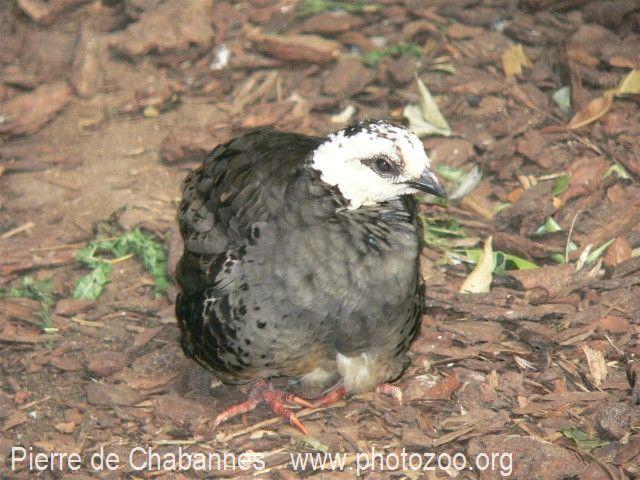| Citation |
|
Description |
Geographic Range [top]
Range Description: Arborophila orientalis is apparently restricted to the eastern part of East Java, Indonesia, from the Yang Highlands eastwards, and thus occupies a range which historically covered only c.7,000 km2 and which today covers less than 2,500 km2. Its population was initially estimated at 1,000-10,000 individuals, but it has subsequently been found at several more sites and may considerably exceed this upper limit. The remaining area of suitable habitat suggests that a total of 11,000-28,000 pairs might still be present, but hunting pressure and variable habitat quality could mean that numbers are much lower than this (B. van Balen in litt. 2012). Its population is conservatively estimated to include 10,000-19,999 mature individuals.
Countries occurrence:
Native:
Indonesia (Jawa)
Additional data:
? Continuing decline in area of occupancy (AOO): Yes
? Extreme fluctuations in area of occupancy (AOO): No ? Estimated extent of occurrence (EOO) - km2: 10800
? Continuing decline in extent of occurrence (EOO): Unknown ? Extreme fluctuations in extent of occurrence (EOO): No
? Number of Locations: 6-10 ? Continuing decline in number of locations: Unknown
? Extreme fluctuations in the number of locations: No ? Lower elevation limit (metres): 500
? Upper elevation limit (metres): 2200
Range Map: Click here to open the map viewer and explore range.
Population [top]
Population: Its population was initially estimated at 1,000-10,000 individuals, but it has subsequently been found at several more sites and may considerably exceed this upper limit. It is restricted to two or three forest blocks, that total an absolute maximum of 225,000 ha of suitable habitat, which, considering home range sizes of c.8-20 ha found in other tropical partridges, suggests that a total of 11,000-28,000 pairs might still be present, but hunting pressure and variable habitat quality could mean that numbers are much lower than this (B. van Balen in litt. 2012). On the basis of this information, its population is conservatively estimated to include 10,000-19,999 mature individuals.
Trend Justification: Remaining forest continues to face logging pressure and the clearance of fragments is commonplace, whilst the species may also suffer some amount of hunting pressure; hence, it is suspected to be declining rapidly overall.
Current Population Trend: Decreasing
Additional data:
? Number of mature individuals: 10000-19999 ? Continuing decline of mature individuals: Yes
? Extreme fluctuations: No ? Population severely fragmented: No
? No. of subpopulations: 2-100 ? Continuing decline in subpopulations: Unknown
? Extreme fluctuations in subpopulations: No ? All individuals in one subpopulation: No
? No. of individuals in largest subpopulation: 1-89
Habitat and Ecology [top]
Habitat and Ecology: While data on this species are extremely scant, current information suggests that it is similar to its close congeners in that it frequents the interior of montane evergreen forest, from 500 m (but usually above 1,000 m) on mountains whose summits tend to be higher than 1,700 m. It is also probably relatively resilient to habitat degradation and hunting pressure, although this remains to be confirmed.
Systems: Terrestrial
Continuing decline in area, extent and/or quality of habitat: Yes
Generation Length (years): 5.4
Movement patterns: Not a Migrant
Threats [top]
Major Threat(s): Most forest in the Yang Highlands has been cleared, while elsewhere in the range of this species degradation occurs along the edges of remaining blocks and clearance of fragments remains commonplace (owing to logging and agricultural encroachment), steadily reducing its habitat. Furthermore, partridges are frequently caught and eaten or traded by local people on Java (Nijman 2003). The combination of these factors is likely to be reducing its population quite rapidly.
Conservation Actions [top]
Conservation Actions: Conservation Actions Underway
A game reserve (perhaps embracing 15 km2 of forest) has existed in the Yang Highlands since 1962, although this has proved an ineffective designation. It also occurs in Meru Betiri National Park and the Kawah Ijen Ungup-ungup Nature Reserve. There is a small captive population (c.20 birds) in Belgium.
Conservation Actions Proposed
Conduct fieldwork to determine the range, altitudinal distribution, population density and ecological requirements of the species; in particular, carry out searches in the Gunung Raung and Gunung Maelang complexes and in the Yang Highlands. Establish the protection of the remaining forest on the Yang Highlands.
Amended [top]
Amended reason: Edit to seasonality in Country Occurrence table.
Citation: BirdLife International. 2017. Arborophila orientalis (amended version of 2016 assessment). The IUCN Red List of Threatened Species 2017: e.T22679038A112384502. http://dx.doi.org/10.2305/IUCN.UK.2017-1.RLTS.T22679038A112384502.en. Downloaded on 20 November 2018.
Disclaimer: To make use of this information, please check the .
Feedback: If you see any errors or have any questions or suggestions on what is shown on this page, please provide us with feedback so that we can correct or extend the information provided
|

